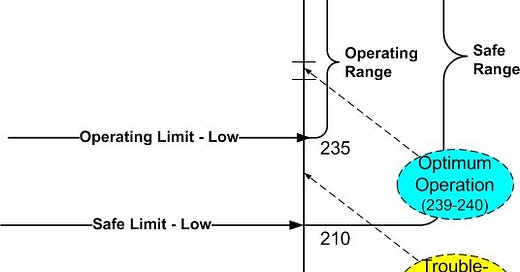Management of Change: Safe Limits
Previous posts in this series have discussed some of the inherent difficulties to do with Management of Change (MOC). Management of Change: When is a ‘change’ a ‘Change’? described some of the circularity that is built into the topic (a feature of all process safety elements). Management of Change: Small and Large Changes discussed the fact that small changes can be more risky than major changes.
In this post we consider one way of determining when the MOC process should be used, i.e., when a ‘change’ is a ‘Change’. One way of doing this is to use pre-defined safety limits.
MOC ― like so many other elements of process safety ― is built around the concept of safe limits. This gives the following definition for Management of Change.
Management of Change is process to ensure that any proposal to move a critical variable outside its current safe limits is properly evaluated and that appropriate safeguards be put in place if the safe limit values change.
(This definition does not cover those situations where a change is covert, i.e., one that happens in the background when ‘no one is looking’.)
Safe limits are shown in thes sketch at the head of this post. The upper value is 275 <units>; the lower value is 210 <units>.





